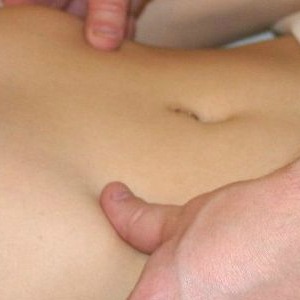- Home
- Asian Massage
- Chi Nei Tsang
As an affiliate with Bookshop, Amazon, and other programs, I may earn revenue from qualifying purchases through affiliate links. This does not affect the price you pay. Privacy Policy / Disclosures. This site is for educational purposes only.
Search this site:
What is Chi Nei Tsang Abdominal Massage?
The ancient Taoist practice of chi nei tsang (CNT) combines abdominal massage, acupressure, breathing techniques, meditation, and sound and color therapies to clear energy blockages in the body.

What Is Chi Nei Tsang Massage?
Chi nei tsang massage works with the energy of internal organs located in the abdomen. Why the focus on massaging the abdomen?
CNT postulates that energy blockages often develop in internal organs and cause tangles and knots in the abdomen. By developing at the center of the body's vital functions, these obstructions constrict energy flow to the rest of the body. Emotions like anger, anxiety, depression, fear, and worry do the most damage. Other causes of problems include accidents, surgery, overwork, bad posture, drugs, poor food, toxins, and stress.1
When unhealthy energy stored in internal organs overflows into other systems of the body, that energy often surfaces as negative emotions and illness. Without an outlet, these negative emotions create an ongoing cycle of negativity and stress. CNT clears toxins, stuck emotions, and excessive heat or heat deficiencies to break that cycle.1
CNT posits that health problems often show up first in the navel area. When that area is out of balance, the navel becomes tight or twisted with lines of stress that reach out and affect the other organs. Thus, massaging the area around the navel can remove the energy blockages and obstructions to address issues in other parts of your body and improve overall health.
According to Gilles Marin, founder and director of the Chi Nei Tsang Institute in Oakland, California, "The navel is the root of the fascia in the body where the meridian system circulates. Every pattern of tension in the body will be represented here in the form of a hard knot, a sensitive or painful sport, a pull or a swelling the tissues under the skin."2
Although CNT can help relieve conditions such as back pain, constipation, indigestion, irritable bowel syndrome, menstrual cramps, and ulcers, Marin emphasizes the technique takes a holistic approach that doesn’t address specific symptoms. Rather, the aim is to address the reason you have symptoms by working "at the level of information, of emotional content, to digest emotional charges."3 Bringing more awareness to the surface lets true healing begin.
CNT Sessions
At the start of a CNT session, the practitioner visually examines and palpates (examines with touch) your navel. The position and shape of the navel indicate your tension patterns and energy blockages, with a round and centered navel considered ideal.
The practitioner begins massage around the rim of the navel. To find blockages, the massage moves out from where the navel is pushed or pulled out of a round shape. The practitioner will often ask you to direct your breath to the area being massaged.
Massage gradually covers the entire abdomen, typically following the intestines from inside of the right hip to the right colic flexure, across the bottom of the rib cage to the left colic flexure, and down the left side of the colon. The depth of massage depends entirely on the recipient.3
The intent of chi nei tsang massage is to bring the navel closer to a round shape and unravel the deep-seated patterns of tension and start a general detoxifying process throughout your body. That is, like many techniques, CNT does not try to fix anything but to create conditions that let the body heal itself.
Video: Chi Nei Tsang With Mantak Chia
Mantak Chia of Thailand introduced CNT to the West in the 1980s.

More information: books by Mantak Chia.
Sources
1Mantak Chia. Chi Nei Tsang: Chi Massage for the Vital Organs. Destiny Books, 2006.
2Gilles Marin. "Restore and Rejuvenate with CNT." Massage Magazine, May/June 2001. Marin is author of Healing from Within with Chi Nei Tsang: Applied Chi Kung in Internal Organs Treatment.
3Jill Ruttenberg. CNT: Digesting Emotions for Better Health. Massage & Bodywork, August/September 2002.

